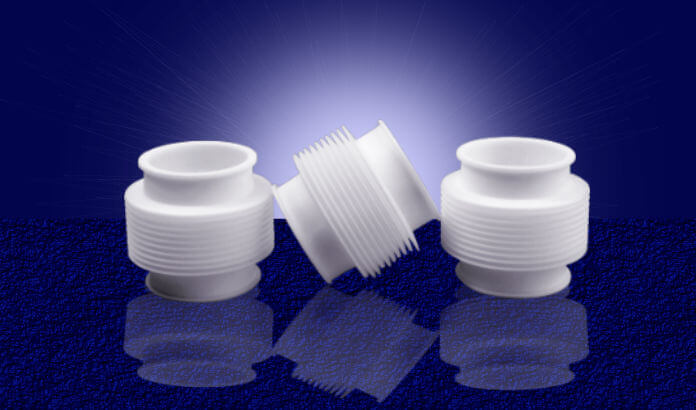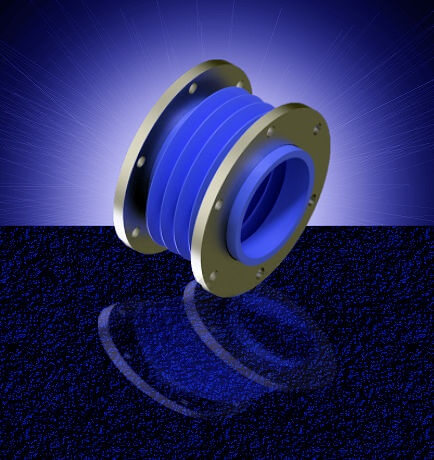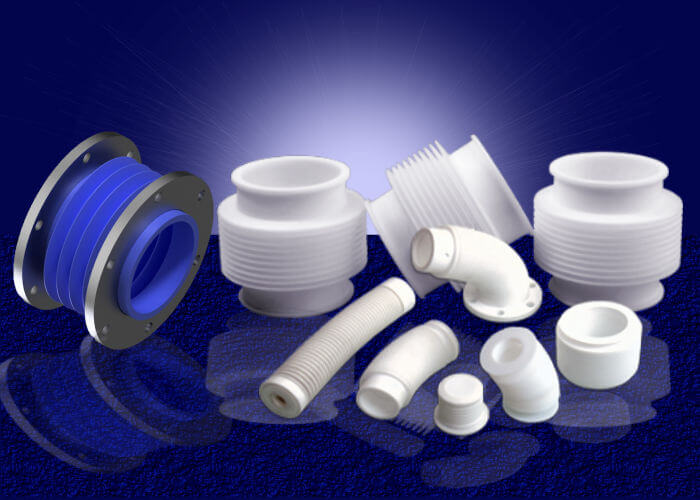Polymer Bellows
Polymer bellows are found in quite a few industries, including petrochemical, medical, pharmaceutical, chemical, and the food industry. Because of its chemical inertness, low spring life, and long flex life, PTFE is often the material of choice for polymer bellows. However, it isn’t the only option. In this article, we are going to compare PTFE and TFM.
Want more information on polymer bellows, check out these posts from the popular Engineer’s Blog from Advanced EMC Technologies:
- For Dummies: 5 Questions and Answers about Polymer Bellows
- PFA and TFM to PTFE as Excellent Material Choice for Bellows and Diaphragms
- 7 Things about PTFE Bellows You Need to Know
PTFE (Polytetrafluoroethylene)
PTFE stands for Polytetrafluoroethylene, a fluorocarbon thermoplastic that has found extensive use in engineering applications and is best known for having the lowest coefficient of friction of any solid. It’s also known as Teflon, Dyneon TM, 1,1,2,2-tetraflouroethene or 1,1,2,2-tetraflouroethylene.
As already pointed out, PTFE is one of the most chemically inert polymers available (Chemical Resistance Chart). It has a continuous usage temperature range from -200°C to 250°C and is quite resistant to water absorption. In addition, it has anti-adhesive behavior which resists the buildup of solids, making it incredibly easy to CIP (Clean In Place). In fact, there are various grades of PTFE that are FDA approved.

Modified PTFE (TFM)
Modified PTFE is chemically referred to as polytetrafluoroethylene, and by the trade name Polyflon. It is a fascinating combination of the properties of PTFE and PFA (Perfluoroalkoxy), which is known for its superior mechanical properties.

Like PTFE, TFM is chemically inert and has a similar range for continuous usage temperature, as well as similar resistance to water absorption. It also retains much of PTFEs non-stick characteristics.
TFM also has a slightly higher spring rate, but noticeably better fatigue properties and exhibits better stress recovery. In addition, it is easier to weld than PTFE and weighs less. TFM is also resistant to both embrittlement and aging.
One factor that makes TFM special is the density of the molecular structure. This results in a significantly lower rate of gas permeation for the same thickness of material when compared to PTFE. This characteristic is extremely important when used in a highly corrosive environment. With its dense molecular structure, TFM also offers a smoother surface finish that PTFE. Also, like PTFE, there are various grades of TFM that have been FDA approved.
Conclusion
PTFE and TFM are used for bellows in extreme corrosion resistance applications, specifically organic compounds, acids, and salts, as well as high temperature and high purity applications. They both exhibit non-stick behavior, and have a similar wide range of usage temperatures. However, there are significant differences between them, namely because TFM combines the best characteristics of both PTFE and PFA. TFM is the bellows material of choice when you need extremely low gas permeation, a longer fatigue life, and a smoother surface finish.
Need more information on advanced polymer materials check out the High Performance Sealing Solutions Guide from Advanced EMC Technologies.

